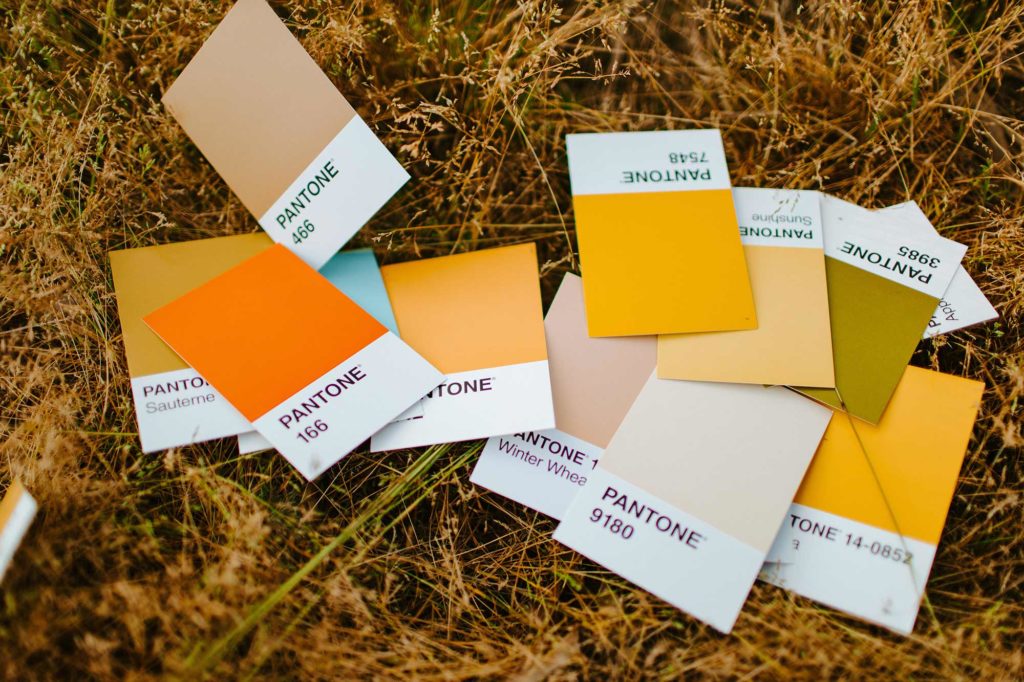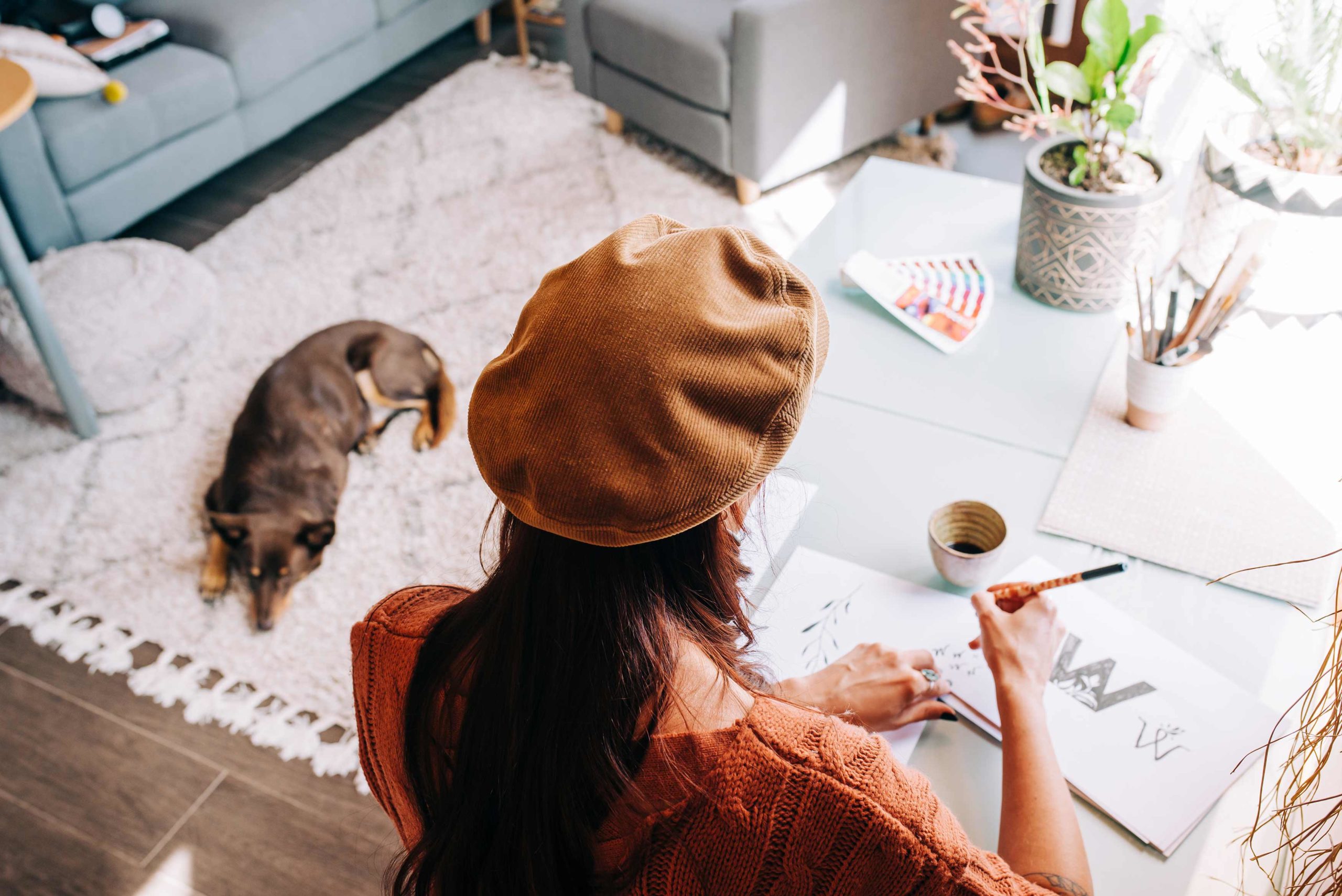Why, you ask, is a branding designer advising anyone to DIY? Because I get it. Starting a business is hard. I know, I’ve done it! Not everyone is in a position to afford a professional hand-crafted logo strategically designed for their brand, particularly if you are a brand new business. While I strongly believe that branding is one of the best investments a business can make (I have yet to see it NOT pay back many many times over), aaaaaand yes, you are better to do it from the start, you may not be ready to take the leap.
If you are just playing around with business ideas, or unsure of which path your new business might take, you may be better waiting to make that investment until you really know your path ahead. If you need a logo or bit of branding to tide you over until that time, I’d like to share a few tips that can make your logo creation process as good as possible.

50 milliseconds
One of the most common mistakes I see people make is to over-complicate their logos. “But it’s clever” I hear you say. Maybe, but no one – I repeat, NO ONE, has time to study the nuances of your logo. It has been shown that people will form a judgement on a brand in just 50 milliseconds. Please, for the love of heaven, don’t make it complex.
Confidence
Nothing oozes confidence (and tells your audience you know what you are doing!) more than a simple, classy, clean logo. Want to tell your story? Abso-freakin-lutely tell your story – but your logo isn’t the place for all that. You have dozens of brand touchpoints with your audience, whether it be social media, signage, print media, even your brand pattern, and ample opportunity to tell your customers what you do and who you are.
Cramming heaps of messages in your logo only results in an ugly, confusing mess of a thing which will make potential customers think twice. There is nothing like an overcrowded logo to tell your audience that you don’t know what you are doing. What do you want to convey? Let your typography speak for you. What do you sell? Let your tagline do that. What is your personality? Let your colours and patterns say it.
Typography
The old KISS acronym comes into its own here (Keep it Simple Sillypants!) On par with an overcrowded logo, a weird or overcomplicated typeface screams “I really have no idea here folks, I’m just making stuff up!” Can you find a typeface which is unique AND simple? Absolutely. Google Fonts is amazing now, but they are free, so everyone and their grandmother’s dog will be using them. There are free font sites galore but they have a lot of very poorly constructed fonts which don’t translate well to web and are unbalanced.
You will really up the game if you choose to pay a handful of dollars for a font that may be a little less widely used and up your ante in uniqueness. Sources like Creative Market have gorgeous, well-priced professional fonts. While I’ve spent literal decades learning the intricacies of typeface psychology and what a font can communicate to your customers, just understand that your font choice can say a heck of a lot about your business.
Do you need two fonts (one for logo and one for your main copy, for instance)? A good idea, by the way! Then a simple rule is choose a serif to pair with a sans-serif or vice versa. Two serifs together rarely work and it is very tricky to match up two sans serifs. And make sure they match each other in feel and weight. Take the time to adjust your kerning (the space between the letters) so it feels just right and perfectly balanced and you’ll notice a difference. One rule that I learned in design school (and still use today) is to squint your eyes and notice if there are any obvious big white spaces or whether it looks like there needs to be more or less space in between a couple of the letters. Out of the box fonts are rarely just right.
Graphics in your logo
Unless you are an illustrator, you likely don’t even need a graphic in your logo. Typographic logos are all the rage now (just typography, no picture/graphic) If you insist on a graphic, (broken record time) simple, simple, simple. Avoid using trendy styles unless you are confident that you will be happy to rebrand again in another 5 years.
Colour in your logo
Your logo MUST work as one colour. Usually when designing logos for clients, I do the black version first. If it doesn’t work in black, it simply won’t work. Only when we get the one-colour version right do I start to think about colourising it. This is a general rule of thumb, but again, attempting to ooze confidence here, one colour logos are where it’s at.
Size
The ol’ “one inch rule”. Is it readable at 2ish cm? Make sure you can read every part of your logo at a very small size. One inch used to be the rule, however these days, social media insists that you have a version of your logo that is much much smaller for profile images, etc. You may want to think about two or three versions of your logo to use in different circumstances. For my clients, I will often design a full logo with tagline, logo without tagline, and one or two different logomarks (think symbol or stamp that represents your logo). The logomark is great for profile images, to put in the bottom of a social media post, or in a website footer. Please, please for heaven’s sake, if you can’t actually read your logo on a social media profile image, get yourself a logomark!
Format
Please don’t just use any old software for this. Choose vector-based software, which will enable you to expand your logo to any size, as it uses mathematic formulae rather than pixels. If you design your logo in photographic software such as photoshop, you will never be able to make it any larger than the document size. Forget ever printing a sign or banner!
I have a free guide that explains vector vs. raster images and waaaaay more about image formats. Just shoot me a message and I’ll email it your way!
Brand colour palette
We could delve into colour psychology for months, but again, just do a bit of research. Colours say things. We associate certain colours with certain things. If you grow citrus, maybe don’t make your logo pink. In the IT industry? Green may be disjointing to your customers. There are so many good articles out there on this that I won’t even mention them here, but before you commit to your colour palette, hop on Google (or Pinterest is great) and dive into it for an hour. And be prepared that your colours on screen (RGB) will often look very very different in print (CMYK), particularly blues, yellows and oranges.

Brand patterns
Having a background pattern, or texture, is a phenomenal way to show the personality of your brand, but it has the glorious side effect of brand consistency. When we talk branding, we talk being consistent with your visuals because consistency = customer loyalty = sales. When brands use bits and pieces of their chosen patterns consistently in their marketing (whether it be social media, web, or print) it shows that they are concerned with quality and will be consistent in their approach to their products or customer service. (Take a look through my portfolio for inspiration). You can look for inspiration for brand patterns anywhere, but make sure you limit your patterns to one or two or you lose the entire purpose.
Best of luck with your designs and have fun!
Do you need help with your DIY brand or feel like it could benefit from some professional eyeballs on it? It may just need a quick hour of fine-tuning. I offer consultancy rates by the hour for some advice with your brand. Or if you feel like you might be ready for a hand-crafted brand with all the bells, whistles and strategy to launch your business to that next level, please download the “Growing Your Business through Branding” guide on the homepage of my website and head to Work With Me, fill in your details and we’ll arrange for a free virtual coffee meeting.

Leave a Comment